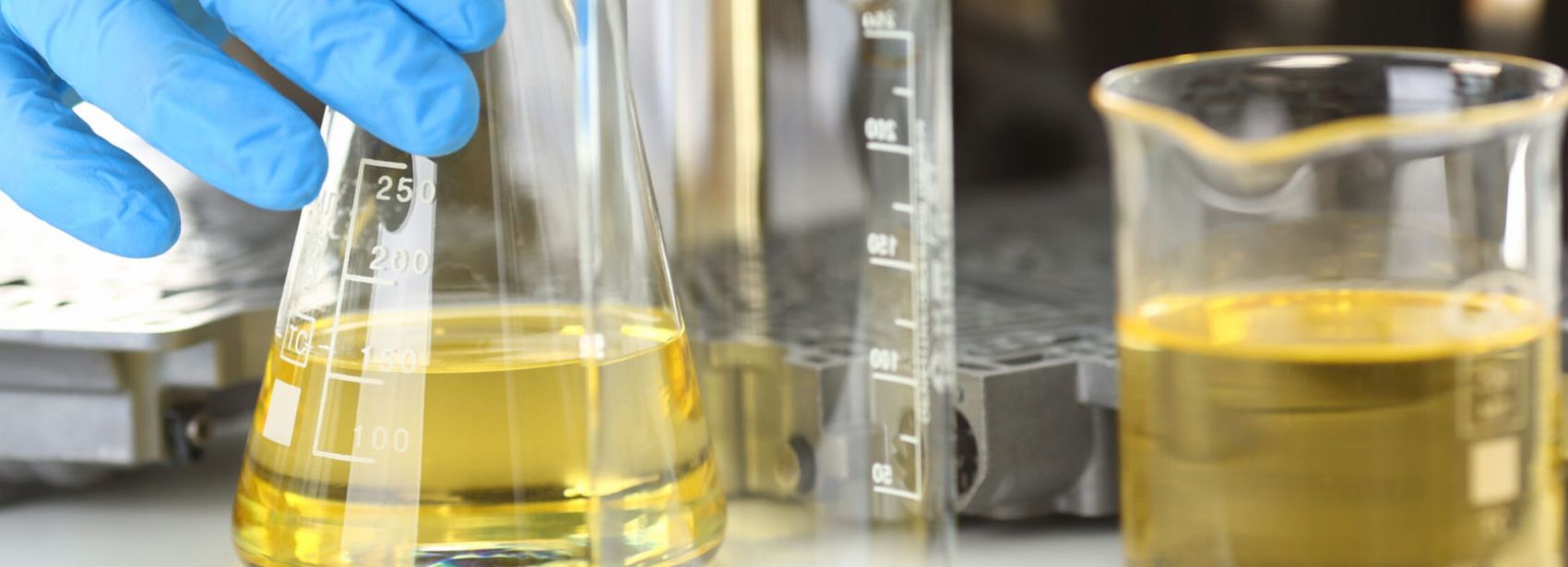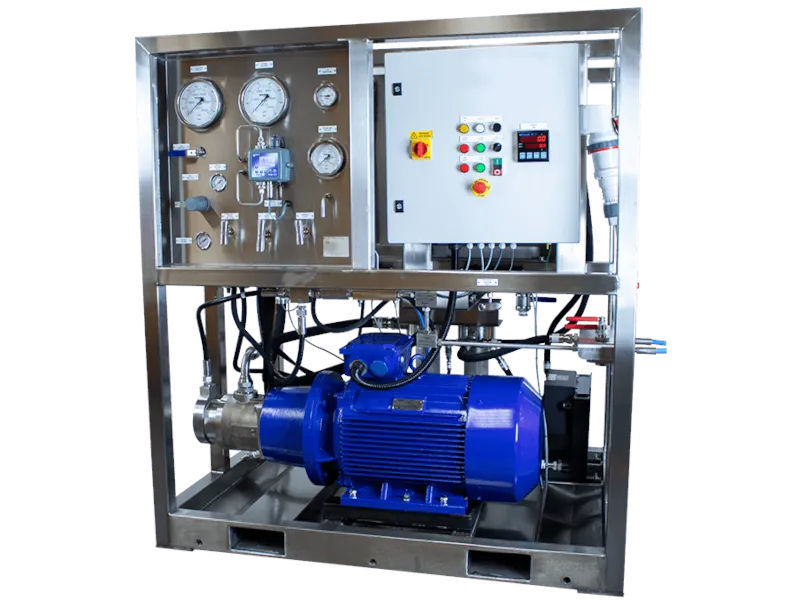
To view our range of Hydraulic Flushing Rigs, please click here.
Hydraulic flushing is the removal of impurities from a hydraulic system. It is employed in any application where a hydraulic system is required to maintain the system's performance and avoid malfunctions, maintaining its durability and efficiency. This procedure is critical for guaranteeing the proper operation of hydraulic systems and preventing equipment damage.
Hydraulic flushing involves the removal of contaminants such as dirt, rust, and debris from a hydraulic system. The process works by circulating a cleaning fluid through the system to remove any impurities that may be present within the system. The cleaning fluid used in hydraulic flushing is typically a water-based solution, but other fluids may also be used depending on the type of contaminants present in the system.
Hydraulic flushing is important because contaminants can cause a variety of issues within the system, including reduced performance, increased wear and tear, and even complete system failures. Regular flushing helps to keep the system in good condition, ensuring it operates efficiently and extends its lifespan.
The steps involved in hydraulic flushing include preparing the system for flushing, circulating the cleaning fluid through the system, and finally, disposing of the contaminated fluid. Preparation involves draining the system of any fluid and removing any filters or strainers. The cleaning fluid is then circulated through the system, removing any contaminants. Finally, the contaminated fluid is disposed of in an appropriate manner.
The equipment and tools required for hydraulic flushing include a pump, a filtering device, hoses, and a tank to hold the cleaning fluid. It is important to take safety precautions when carrying out hydraulic flushing, such as wearing protective clothing and ensuring the system is properly grounded.
Additionally, it is important to ensure that the flow of the cleaning fluid is turbulent. Turbulent flow is characterized by random and chaotic movements, which helps to remove contaminants from the system more effectively. A turbulent flow helps to mix the cleaning fluid with the contaminants, causing them to break away from surfaces and become suspended in the fluid, making it easier to remove them from the system.
To describe the flow of fluid in a system, a concept called the Reynolds Number is used and this concept is relevant to the turbulent flow used for hydraulic flushing. The Reynolds number is a dimensionless number used in fluid mechanics to predict the behavior of fluid flows. The Reynolds number is calculated by dividing the inertial forces of the fluid by the viscous forces, and it determines the type of flow that will occur in a system. A Reynolds number greater than 2,300 indicates that the flow is turbulent, while a Reynolds number less than 2,300 indicates that the flow is laminar. In hydraulic flushing, it is important to maintain a Reynolds number greater than 2,300 to ensure that the flow of the cleaning fluid is turbulent and that contaminants are removed effectively.
The recommended operating temperature for hydraulic flushing is usually between 60 to 80°C (140 to 176°F). This temperature range helps to effectively dissolve and remove any contaminants that may be present in the system. However, it's important to note that the exact temperature will depend on the specific type of fluid and system being used, and the manufacturer's recommendations should be consulted for guidance.

Hydraulic flushing offers several advantages, including improved system performance, increased lifespan of equipment, and the prevention of system failures and malfunctions. A properly flushed hydraulic system operates more efficiently, reducing the amount of energy required to perform its functions. This, in turn, extends the lifespan of the equipment, saving maintenance and repair costs in the long term.
There are different types of flushing techniques, including offline flushing and in-place flushing. The type of flushing used depends on the system being flushed and the type of contaminants present. Offline flushing involves circulating the cleaning fluid through a separate circuit, while in-place flushing circulates the fluid through the system being flushed.
Offline and in-place hydraulic flushing are two methods of cleaning hydraulic systems, but they differ in several key ways. In offline flushing, the hydraulic system is disconnected from the machinery and operated separately, allowing for a thorough cleaning of the system. In contrast, in-place flushing is performed while the system is still connected to the machinery and in operation.
These different methods of flushing have distinct advantages and disadvantages. Firstly, offline flushing requires that the system be shut down, making it unavailable for use during the flushing process. In-place flushing, on the other hand, allows the system to continue operating, minimizing downtime. Offline flushing allows for the system to be operated separately, therfore it provides more opportunities for contaminants to be flushed out of the system. In-place flushing, on the other hand, may not remove all contaminants, as some may remain trapped in hard-to-reach areas of the system.
However, offline flushing is typically more expensive than in-place flushing due to the additional time and resources required to disconnect and operate the system separately. In-place flushing is usually more cost-effective, as it can be performed while the system is still in operation.
So, the choice between offline and in-place hydraulic flushing depends on the specific needs of the hydraulic system and the goals of the flushing process. Both methods have their advantages and disadvantages, and it is important to weigh them up carefully before making a decision.
Hydraulic flushing is often compared to other flushing methods, such as chemical cleaning and steam cleaning. While these methods may also be effective in removing contaminants, hydraulic flushing is often the preferred method due to its non-toxic nature and ability to maintain system performance.
Some people are of the opinion that hydraulic flushing is an unnecessary expense and that it is only required for older systems. However, regular flushing is necessary for all hydraulic systems, regardless of age, to maintain their performance and extend their lifespan.
Hydraulic flushing is an essential process in maintaining the performance and longevity of hydraulic systems. By removing contaminants and improving system performance, hydraulic flushing helps to prevent malfunctions and system failures. This article has provided a comprehensive guide on hydraulic flushing, including its definition, the process itself, its purpose, and additional information to help readers understand the concept. Regular hydraulic flushing is an investment that pays off in the long term by reducing maintenance and repair costs and ensuring the efficient and safe operation of the system.
Hydraulic flushing is an important process for maintaining the performance and longevity of hydraulic systems. Properly carried out, it can help prevent system failures and malfunctions, increase the lifespan of equipment, and improve system performance. It is recommended that all hydraulic systems undergo regular flushing to ensure they operate efficiently and effectively.
Vat Reg Number: 846644204 Company Registration Number: 5230249
© Copyright 2025 Zeus Hydratech | All Rights Reserved